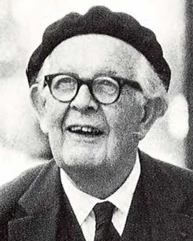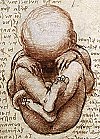
Developmental psychology is the scientific study of how and why humans grow, change, and adapt across the course of their lives. Originally concerned with infants and children, the field has expanded to include adolescence, adult development, aging, and the entire lifespan. Developmental psychologists aim to explain how thinking, feeling, and behaviors change throughout life. This field examines change across three major dimensions, which are physical development, cognitive development, and social emotional development. Within these three dimensions are a broad range of topics including motor skills, executive functions, moral understanding, language acquisition, social change, personality, emotional development, self-concept, and identity formation.

Adolescence is a transitional stage of physical and psychological development that generally occurs during the period from puberty to adulthood. Adolescence is usually associated with the teenage years, but its physical, psychological or cultural expressions may begin earlier or end later. Puberty typically begins during preadolescence, particularly in females. Physical growth and cognitive development can extend past the teens. Age provides only a rough marker of adolescence, and scholars have not agreed upon a precise definition. Some definitions start as early as 10 and end as late 30. The World Health Organization definition officially designates an adolescent as someone between the ages of 10 and 19.

Jean William Fritz Piaget was a Swiss psychologist known for his work on child development. Piaget's theory of cognitive development and epistemological view are together called genetic epistemology.
A toddler is a child approximately 1 to 3 years old, though definitions vary. The toddler years are a time of great cognitive, emotional and social development. The word is derived from "to toddle", which means to walk unsteadily, like a child of this age.

Piaget's theory of cognitive development, or his genetic epistemology, is a comprehensive theory about the nature and development of human intelligence. It was originated by the Swiss developmental psychologist Jean Piaget (1896–1980). The theory deals with the nature of knowledge itself and how humans gradually come to acquire, construct, and use it. Piaget's theory is mainly known as a developmental stage theory.
Cognitive development is a field of study in neuroscience and psychology focusing on a child's development in terms of information processing, conceptual resources, perceptual skill, language learning, and other aspects of the developed adult brain and cognitive psychology. Qualitative differences between how a child processes their waking experience and how an adult processes their waking experience are acknowledged. Cognitive development is defined as the emergence of the ability to consciously cognize, understand, and articulate their understanding in adult terms. Cognitive development is how a person perceives, thinks, and gains understanding of their world through the relations of genetic and learning factors. There are four stages to cognitive information development. They are, reasoning, intelligence, language, and memory. These stages start when the baby is about 18 months old, they play with toys, listen to their parents speak, they watch TV, anything that catches their attention helps build their cognitive development.
Egocentrism is the inability to differentiate between self and other. More specifically, it is the inability to accurately assume or understand any perspective other than one's own. Egocentrism is found across the life span: in infancy, early childhood, adolescence, and adulthood. Although egocentric behaviors are less prominent in adulthood, the existence of some forms of egocentrism in adulthood indicates that overcoming egocentrism may be a lifelong development that never achieves completion. Adults appear to be less egocentric than children because they are faster to correct from an initially egocentric perspective than children, not because they are less likely to initially adopt an egocentric perspective.
Relational aggression, alternative aggression, or relational bullying is a type of aggression in which harm is caused by damaging someone's relationships or social status.

Child development involves the biological, psychological and emotional changes that occur in human beings between birth and the conclusion of adolescence.
The imaginary audience refers to a psychological state where an individual imagines and believes that multitudes of people are listening to or watching them. It is one of the mental constructs in David Elkind's idea of adolescent egocentrism. Though this state is often exhibited in young adolescence, people of any age may harbor a fantasy of an imaginary audience.
Adult development encompasses the changes that occur in biological and psychological domains of human life from the end of adolescence until the end of one's life. Changes occur at the cellular level and are partially explained by biological theories of adult development and aging. Biological changes influence psychological and interpersonal/social developmental changes, which are often described by stage theories of human development. Stage theories typically focus on "age-appropriate" developmental tasks to be achieved at each stage. Erik Erikson and Carl Jung proposed stage theories of human development that encompass the entire life span, and emphasized the potential for positive change very late in life.
The behavioral analysis of child development originates from John B. Watson's behaviorism.
Infant cognitive development is the first stage of human cognitive development, in the youngest children. The academic field of infant cognitive development studies of how psychological processes involved in thinking and knowing develop in young children. Information is acquired in a number of ways including through sight, sound, touch, taste, smell and language, all of which require processing by our cognitive system. However, cognition begins through social bonds between children and caregivers, which gradually increase through the essential motive force of Shared intentionality. The notion of Shared intentionality describes unaware processes during social learning at the onset of life when organisms in the simple reflexes substage of the sensorimotor stage of cognitive development do not maintain communication via the sensory system.
Childhood amnesia, also called infantile amnesia, is the inability of adults to retrieve episodic memories before the age of two to four years. It may also refer to the scarcity or fragmentation of memories recollected from early childhood, particularly occurring between the ages of 2 and 6. On average, this fragmented period wanes off at around 4.7 years. Around 5–6 years of age in particular is thought to be when autobiographical memory seems to stabilize and be on par with adults. The development of a cognitive self is also thought by some to have an effect on encoding and storing early memories.
Role-taking theory is the social-psychological concept that one of the most important factors in facilitating social cognition in children is the growing ability to understand others’ feelings and perspectives, an ability that emerges as a result of general cognitive growth. Part of this process requires that children come to realize that others’ views may differ from their own. Role-taking ability involves understanding the cognitive and affective aspects of another person's point of view, and differs from perceptual perspective taking, which is the ability to recognize another person's visual point of view of the environment. Furthermore, albeit some mixed evidence on the issue, role taking and perceptual perspective taking seem to be functionally and developmentally independent of each other.

Childhood acquired brain injury (ABI) is the term given to any injury to the brain that occurs during childhood but after birth and the immediate neonatal period. It excludes injuries sustained as a result of genetic or congenital disorder. It also excludes those resulting from birth traumas such as hypoxia or conditions such as foetal alcohol syndrome. It encompasses both traumatic and non-traumatic injuries.
Adolescent egocentrism is a term that child psychologist David Elkind used to describe the phenomenon of adolescents' inability to distinguish between their perception of what others think about them and what people actually think in reality. Elkind's theory on adolescent egocentrism is drawn from Piaget's theory on cognitive developmental stages, which argues that formal operations enable adolescents to construct imaginary situations and abstract thinking.

Early childhood development is the period of rapid physical, psychological and social growth and change that begins before birth and extends into early childhood. While early childhood is not well defined, one source asserts that the early years begin in utero and last until 3 years of age.
Perspective-taking is the act of perceiving a situation or understanding a concept from an alternative point of view, such as that of another individual.
The Three Mountains Task was a task developed by Jean Piaget, a developmental psychologist from Switzerland. Piaget came up with a theory for developmental psychology based on cognitive development. Cognitive development, according to his theory, took place in four stages. These four stages were classified as the sensorimotor, preoperational, concrete operational and formal operational stages. The Three Mountain Problem was devised by Piaget to test whether a child's thinking was egocentric, which was also a helpful indicator of whether the child was in the preoperational stage or the concrete operational stage of cognitive development.






